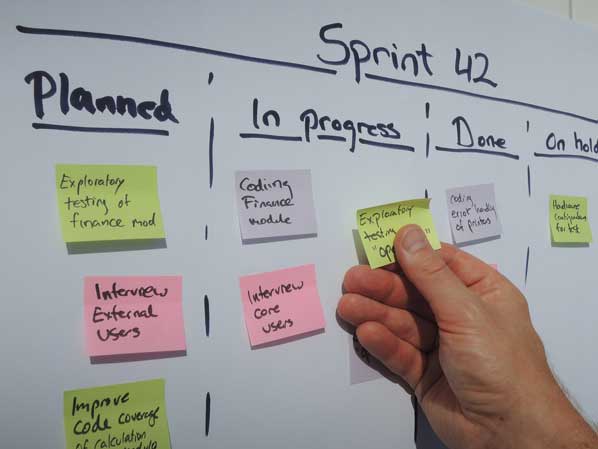
When we examine what makes projects succeed or fail, we’re actually looking at a variety of vital success measures that can keep our projects healthy – or offer a powerful remedy if they start to break down.
Let’s explore some of the reasons why projects derail and how to use four vital success measures to revive them.
What Are Some Characteristics of Projects That Fail?
Projects that fall short of achieving their ultimate objectives often exhibit one or more of the following traits:
- The projects don’t deliver what is expected or required in a usable form. The project scope may not be well defined, or it might not take into account the real needs of the end users or customers. In the latter situation, the project delivers a result that doesn’t help the customers accomplish their primary goals in a satisfying way.
- The projects lack change management processes.
- The projects lack project sponsorship or fail to get buy-in from the right stakeholders.
- The projects may not have the right resources or budget available due to other higher priority initiatives.
- The projects don’t report or escalate critical problems in a timely manner, which chews up resources, budget, and schedule without a chance of re-planning effectively.
- The projects fail to plan for risks and develop contingency plans. For example, they could experience a mass exodus of key team members, where no one is left to finish the work.
How Do You Recognize a Project That Has Gotten into Trouble?
Spotting and fixing problems early can help team members, clients, stakeholders, and sponsors avoid project failure. Red flags to watch for from the outset include situations in which:
- Schedule delays and missed commitments are rampant.
- The project is over budget with no end in sight.
- Low morale and a lack of teamwork plague the project members.
- Many changes and uncontrolled scope creep are occurring.
- No clear direction exists for where the project is headed or when it will get there.
- Major issues (showstoppers) have not been identified or diagnosed.
How Do You Rescue a Troubled Project?
Four vital success measures appear below that can prevent problems from occurring, and if needed, realign a project that has gotten off track. Those measures are:
1) investigating the current situation
2) assessing and re-planning the project
3) resetting everyone’s expectations, and
4) aiming to deliver per the new plan
Under each measure are specific actions you can take to significantly improve the project’s outcome.
Measure #1. Investigate where the project stands and where it is headed.
Specific actions that can apply to any project (whether or not it’s in trouble) include maintaining an open and active communication style and continually taking the project’s “temperature,” as follows:
- Reviewing project documentation, such as a project plan and open issues list.
- Conducting interviews with sponsors, team, stakeholders, vendors, and so forth.
- Identifying project expectations from the interviews — are all viewpoints aligned?
- Identifying show-stopping problems from the issues list and the interviews.
Measure #2. Assess and re-plan the project if it has gotten off track.
Specific actions can include thoroughly evaluating the project’s situation and, if needed, charting a new course. You can begin realigning a troubled project by:
- Confirming who the project sponsors and stakeholders are.
- Verifying and validating the project objectives.
- Clarifying the project’s priorities and risks. Determine where this project falls with respect to the organization’s other priorities. If it’s low, realistically consider whether the project should be cancelled, postponed, or scaled down.
- Verifying the mechanisms for escalating questions, concerns, and problems.
- Determining whether you have the right resources available — both people and funding sources.
- Clarifying everyone’s roles and responsibilities.
- Assessing whether you have the right documentation:
- Is the project plan up to date?
Are critical issues identified with action items assigned? - Determining whether your project meetings involve the right attendees.
- Identifying new or re-planning the existing milestones.
Measure #3. Reset everyone’s expectations.
Specific actions will involve communicating the need for changes to, and getting agreement from, all key parties, such as by:
- Presenting the facts candidly to the sponsor, stakeholders, and team members.
- Obtaining buy-in from everyone on how to move forward. If the project features or deliverables need to be scaled down, or if the budget and schedule need to be revised, negotiate these changes with the sponsor and stakeholders.
- Aligning your team and removing obstacles wherever possible.
Measure #4. After resetting project goals and expectations, aim to deliver!
Specific actions include accomplishing all re-planned project goals and objectives by:
- Doing what you say you’re going to do!
- Keeping the project schedules and issues logs current, and discussing them with your team regularly.
- Listening to your team! Don’t shoot the messengers who raise red flags.
- Escalating major issues when you need to, whether to a steering committee, management, or other stakeholders.
- Continuing to set and reset expectations as needed. Don’t ignore warning signs.
- Continuing to manage changes and risks.
- Maintaining a positive but realistic attitude about achieving the project goals.
- Recognizing team members and celebrating success, and learning from mistakes.
- Continuing to communicate, communicate, communicate!
In conclusion, vital success measures help reveal why a troubled project has gotten off track and how to reframe its success. By 1) continuing to investigate where the project stands, 2) assessing and re-planning the project as needed, 3) resetting everyone’s expectations, and 4) aiming to deliver, you can resuscitate an ailing project and deliver the desired results.
About the Author
Adele Sommers, Ph.D. is the author of the award-winning “Straight Talk on Boosting Business Performance” success program. She helps people “discover and recover” the profits their businesses may be losing daily through overlooked performance potential.




